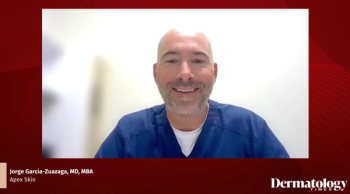
Billing for nail treatments
Although most dermatologists try to stay away from treating nails and nail diseases, it's inevitable that patients will receive services for treating the nail and nail-related problems.
Although most dermatologists try to stay away from treating nails and nail diseases, it's inevitable that patients will receive services for treating the nail and nail-related problems.
Because of excessive billing by podiatrists in the past, the Center for Medicare and Medicaid Services (CMS) and most commercial carriers have limited the coverage for nail-related services and/or have established medical necessity guidelines in those cases where nail-related services would be covered.
Needing answers I can dig my nails into
A: Dear Needing:
You are correct in that CPT code 11755 is the correct code for biopsy of the nail bed or nail plate. But you need to carefully review the definition:
11755: Biopsy of nail unit (e.g., plate, bed, matrix, hyponychium, proximal and lateral nail folds) (separate procedure).
The key to the answer to your question is the first part that states "biopsy of nail unit." That means that you can only charge CPT code 11755 once per nail no matter what part or parts of that nail you biopsy. In your case, both biopsies were from the same nail so you can only bill this code once.
That should answer part two of your question. However, hypothetically, if this had been two different nails, then you would not bill CPT code 11755 at two units on one line of the claim form; instead bill it on two separate lines using either a -76 or -59 on the second duplicate code depending on carrier preference:
11755
11755-76
or
11755
11755-59
Q: I have a heavy Medicare patient base so it is not uncommon for me to have patients ask me to trim their nails. Most of the requests come from patients who have disfiguring arthritis or other severe medical conditions that keep them from being able to trim their own nails. I don't have the heart to refer them to the podiatrist since many have transportation difficulties and already have problems getting to my office for their skin cancers. I feel somewhat obligated to perform this service. Although I won't discontinue helping my loyal seniors with trimming their nails should your reply to my question be a "no," but I have to ask anyway. Is there a way for me to bill Medicare for trimming nails and if so how do I code it? Are there any restrictions or medical necessity requirements I must know about?
Dr. Rin Trim Trim
A: Hey, Dr. Trim!
First, props to you for being a kindhearted physician. Actually, Medicare does cover trimming of the nails, but there are restrictions and quite of bit of criteria that need to be met. They are pretty complicated at first glance, but once you understand, you'll have concrete guidelines of when you can or can't bill and what medical necessity criteria have to be met.
The best way to know exactly what your carrier requires is by accessing your carrier's Web site and searching for trimming nails. You should have no problem accessing their policy. I usually just use Google and most Medicare Part B Carrier Web sites are listed with a direct link to the policy.
The CPT codes most frequently associated with nail trimming, debridement and avulsion (which are all codes that may be applicable to what you are doing) are:
11719: Trimming of nondystrophic nails, any number
11720: Debridement of nail(s) by any method; one to five
11721: Six or more
11730: Avulsion of nail plate, partial or complete, simple single
11732: Each additional nail plate
The requirements for payment of Medicare claims for foot and nail care services are mainly determined based on whether or not the service represents "routine foot care," involves non-dystrophic nails or diseased nails and the presence of certain illnesses and medical conditions which affect the patients' ability to perform the service themselves.
There are modifiers that are sometimes required and these are -Q7, -Q8, -Q9 or the toe and finger modifiers which are listed in Appendix A (page 405) of the 2005 CPT book.
Newsletter
Like what you’re reading? Subscribe to Dermatology Times for weekly updates on therapies, innovations, and real-world practice tips.
















